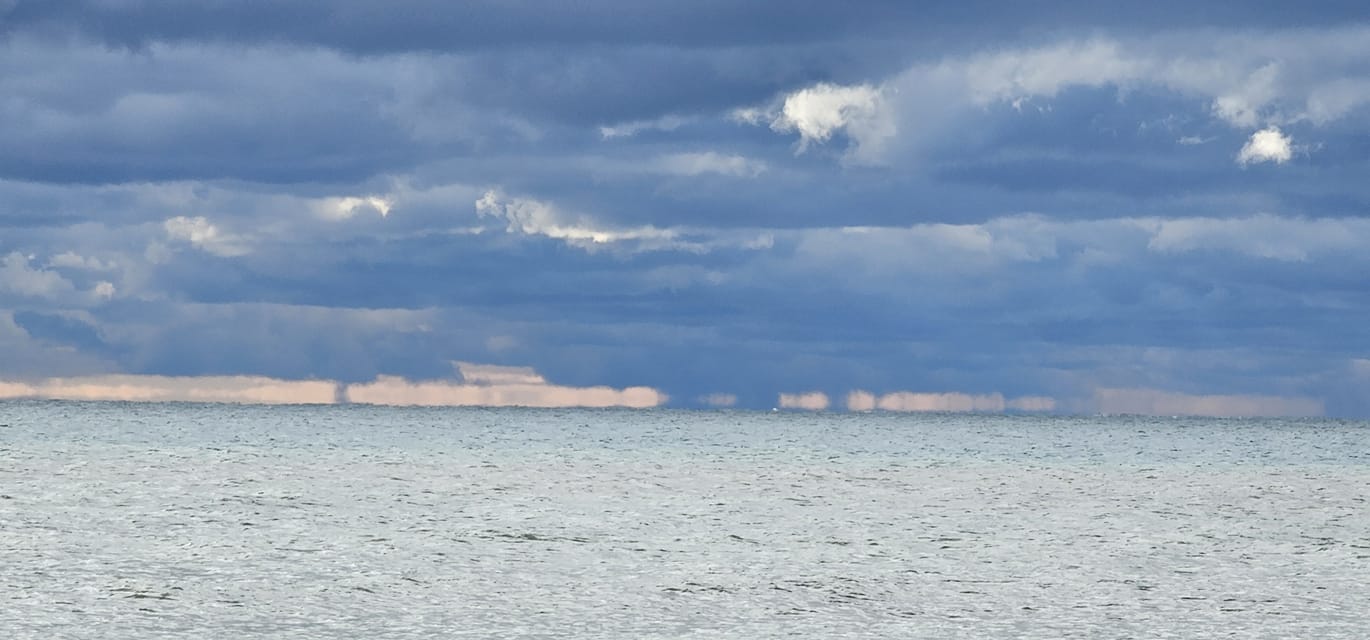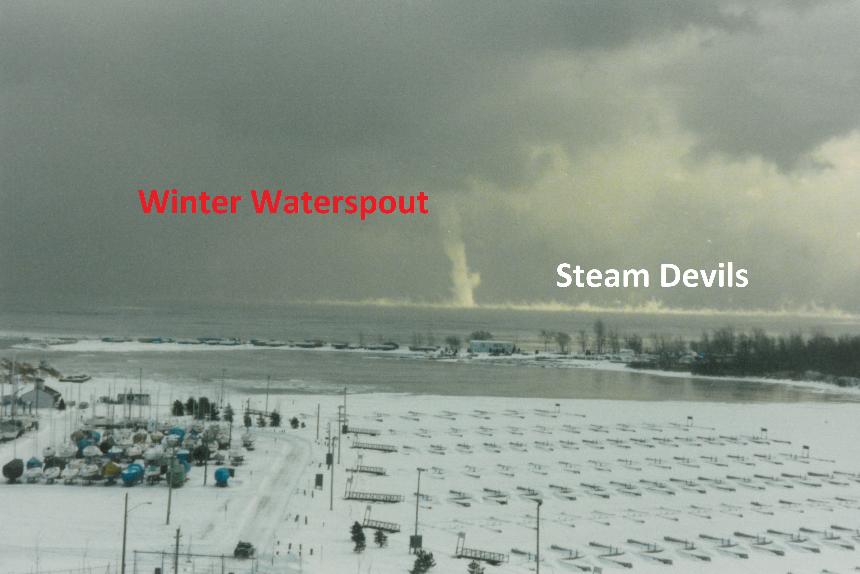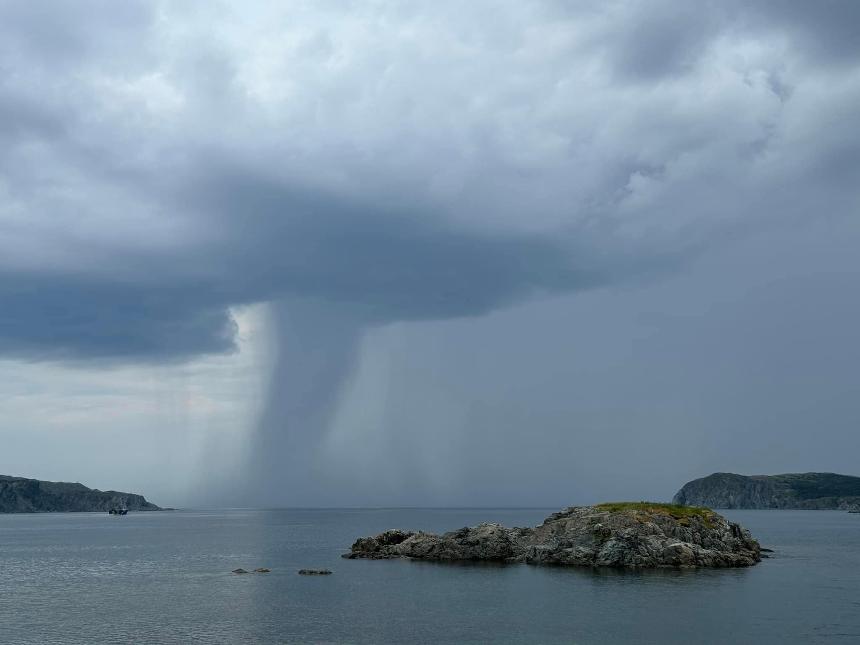Optical Illusions
With the right atmospheric conditions, showers, clouds and even steam from factories far off in the distance can appear as waterspouts. This is an optical illusion caused by light being refracted from over the horizon and reaching the observer's eyes.
Photo below of showers distant over Lake Michigan as seen from Two Rivers, Wisconsin. September 7, 2024. Courtesy Jason Daughenbaugh.
Gustnadoes
Gustnadoes are shallow surface-based vortices that form along the leading edge of a gust front, produced by a severe thunderstorm. When over water, gustnadoes are frequently misreported as waterspouts because both have similar visible characteristics near the water surface. The similarity ends at higher levels. There is no funnel cloud associated with a gustnado, whereas with a waterspout there is. Also, gustnadoes can form well ahead of a thunderstorm where there is no cloud. Waterspouts always have a cloud associated with them. Gustnadoes last from a few seconds to a few minutes. Multiple gustnadoes can also form at the same time. The windspeed in a gustnado ranges from a minimum of 80 km/h to a maximum of 180 km/h. Gustnadoes are not included on the ICWR's World Waterspout Map.
On July 16, 2023, a gustnado was spotted by a drone over the Loxahatchee River in Florida. Courtesy Manny Vetti.
Spray devils are are mechanically generated vortices that form during high winds, and near rough terrain. Spray devils are not connected to clouds. They are frequently mistaken for waterspouts.On January 28, 2024, over a lake near Kinlochewe, Scotland, spray devils formed during high winds of 88 km/hr. https://twitter.com/i/status/1751620167790915961
Steam devils, otherwise known as "Arctic outbreak vortices", are whirls of steam that form when very cold air moves over open water. They vary in size, appearing most often as thin and rope-like, but occasionally are seen as large wide columns with a clear central core extending several hundred metres in height. They appear white when the sun is shining on them or dark grey when under cloud cover. Steam devils are associated with "Arctic sea smoke" which appears as steam forming over the water. Steam devils become more frequent the colder and windier it gets.
Each winter, the public and media often mistaken steam devils for waterspouts. The main difference between steam devils and waterspouts is that steam devils are much weaker than waterspouts. Steam devils are actually more related to dust devils, than waterspouts. Steam devils do not exhibit the characteristic "spray ring" that waterspouts do near the surface of the water. This spray ring is an indicator of the violently rotating air in the waterspout. It should be noted that waterspouts do occur in the winter ("winter waterspout") during Arctic outbreaks, but are rarely seen because they are usually embedded in snowsqualls.
On January 26, 1994, a winter waterspout was sighted over Lake Ontario, off of Whitby, Ontario, Canada (picture below).
Sometimes rain shafts look like waterspouts. Here a rain shaft that formed off of Twillingate, Newfoundland, Canada, on July 18, 2024. Courtesy Twillingate Island.




